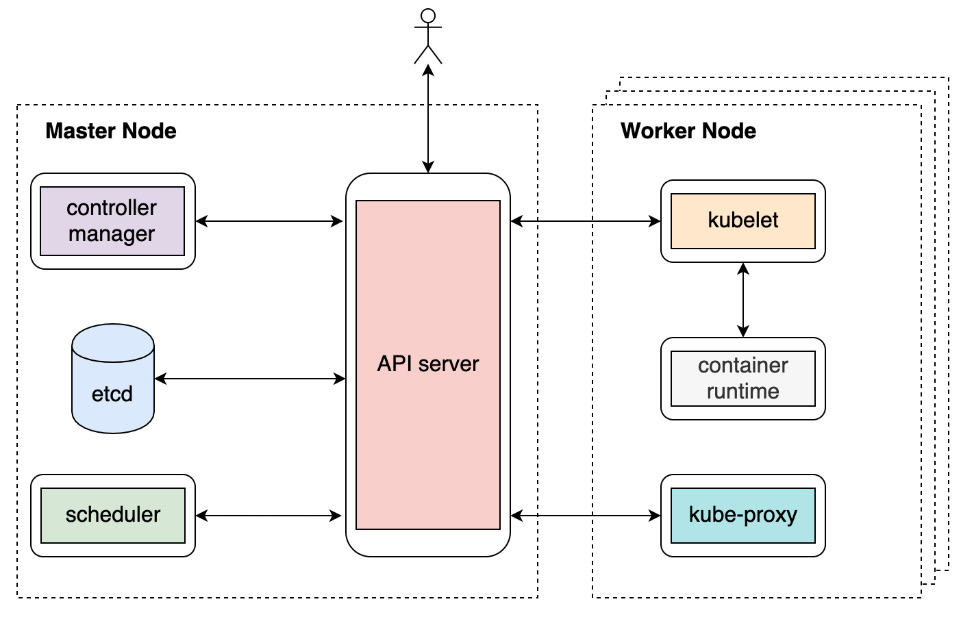Kubernetes Architecture
In the previous section, we gained a first impression of the core Kubernetes components: etcd, the API server, the scheduler, the controller manager, and the kubelet. These components, plus other add-ons, comprise the Kubernetes architecture, which can be seen in the following diagram:

Figure 2.8: Kubernetes architecture
At this point, we won't look at each component in too much detail. However, at a high-level view, it's critical to understand how the components communicate with each other and why they're designed in that way.
The first thing to understand is which components the API server can interact with. From the preceding diagram, we can easily tell that the API server can talk to almost every other component (except the container runtime, which is handled by the kubelet) and that it also serves to interact with end-users directly. This design makes the API server act as the "heart" of Kubernetes. Additionally, the API server also scrutinizes incoming requests and writes API objects into the backend storage (etcd). This, in other words, makes the API server the throttle of security control measures such as authentication, authorization, and auditing.
The second thing to understand is how the different Kubernetes components (except for the API server) interact with each other. It turns out that there is no explicit connection among them – the controller manager doesn't talk to the scheduler, nor does the kubelet talk to kube-proxy.
You read that right – they do need to work in coordination with each other to accomplish many functionalities, but they never directly talk to each other. Instead, they communicate implicitly via the API server. More precisely, they communicate by watching, creating, updating, or deleting corresponding API objects. This is also known as the controller/operator pattern.
Container Network Interface
There are several networking aspects to take into consideration, such as how a pod communicates with its host machine's network interface, how a node communicates with other nodes, and, eventually, how a pod communicates with any pod across different nodes. As the network infrastructure differs vastly in the cloud or on-premises environments, Kubernetes chooses to solve those problems by defining a specification called the Container Network Interface (CNI). Different CNI providers can follow the same interface and implement their logic that adheres to the Kubernetes standards to ensure that the whole Kubernetes network works. We will revisit the idea of the CNI in Chapter 11, Build Your Own HA Cluster. For now, let's return to our discussion of how the different Kubernetes components work.
Later in this chapter, Exercise 2.05, How Kubernetes Manages a Pod's Life Cycle, will help you consolidate your understanding of this and clarify a few things, such as how the different Kubernetes components operate synchronously or asynchronously to ensure a typical Kubernetes workflow, and what would happen if one or more of these components malfunctions. The exercise will help you better understand the overall Kubernetes architecture. But before that, let's introduce our containerized application from the previous chapter to the Kubernetes world and explore a few benefits of Kubernetes.













































































